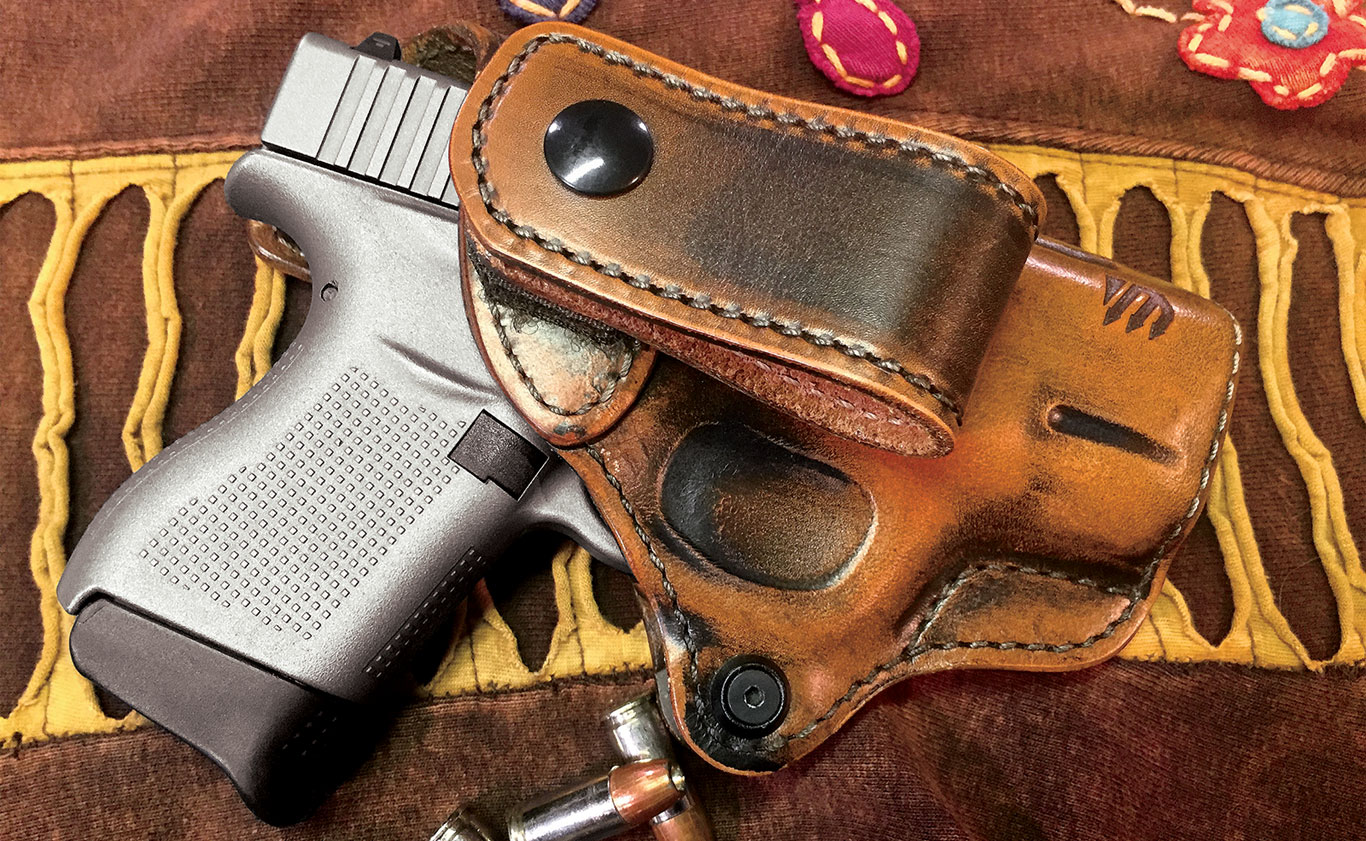by Eve Flanigan

Not all holsters are created equal. Aside from the safety/retention aspect, it’s important to consider your daily activities, surroundings and preferred way of dressing to select the rig that’s right for you.
The firearm industry is practically doing backflips to meet the whims and needs of female carriers, and the number of options increases every year. But that doesn’t mean every option is a good one.
To be acceptable, a holster must cover the trigger guard so nothing can get in there. That means testing, or if you’re shopping online, envisioning yourself carrying or wearing the holster on a typical day. Is there anything on your clothing or in your environment that could get inside the trigger guard and cause the gun to fire?
For example, an economical soft-sided, belly band holster with stretchy elastic around the firearm, worn around the waist, is a safe setup for a day at the office. But when carrying my wiggly dog with his stiff toenails, it’s not at all safe.
Your holster must also keep the gun secure until you draw it, and the holster itself should not be able to break away or fall from its hiding place.
For instance, the clipless, inside-the-waistband holster I often carry is secure in most situations, including jogging and riding a horse. But on those rare days when rock climbing or playing on gym equipment, this type of holster could allow the gun or gun and holster to fall out. In these cases I choose a different holster with retention devices.
Another important consideration in holster selection is efficiency—both in deploying the gun and also the ease of donning and shedding the holster every day. Some holsters can add significant time to your routine. If you’re

